Read the full report
High numbers of birds present in and around both refuges
- Exmouth refuge supported very large numbers of waterbirds on occasion, and notable Vantage Point Counts were made for: Dark-bellied Brent Goose (93.1%), Pintail (57.4%), Shelduck (80.0%) and Wigeon (43.3%), Bar-tailed Godwit (43.3%), and Turnstone (25.7%).
- The Dawlish refuge recorded notable Vantage Point counts for: Ringed Plover (82.4%), Knot (67.1%), Dark-bellied Brent Goose (50.1%), Goldeneye (33.3%), Shelduck (29.8%), and Oystercatcher (29.8%). (Table 1, page 34; Table 2, page 36)
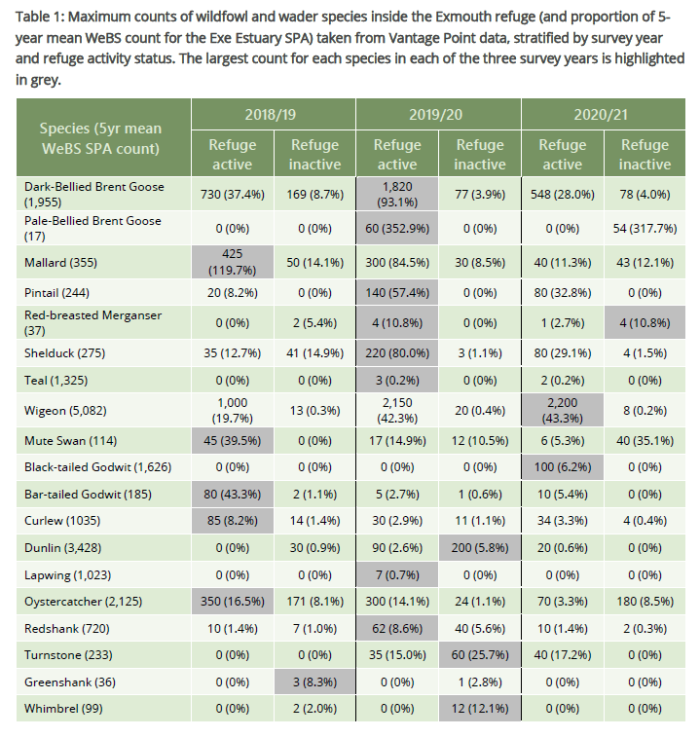
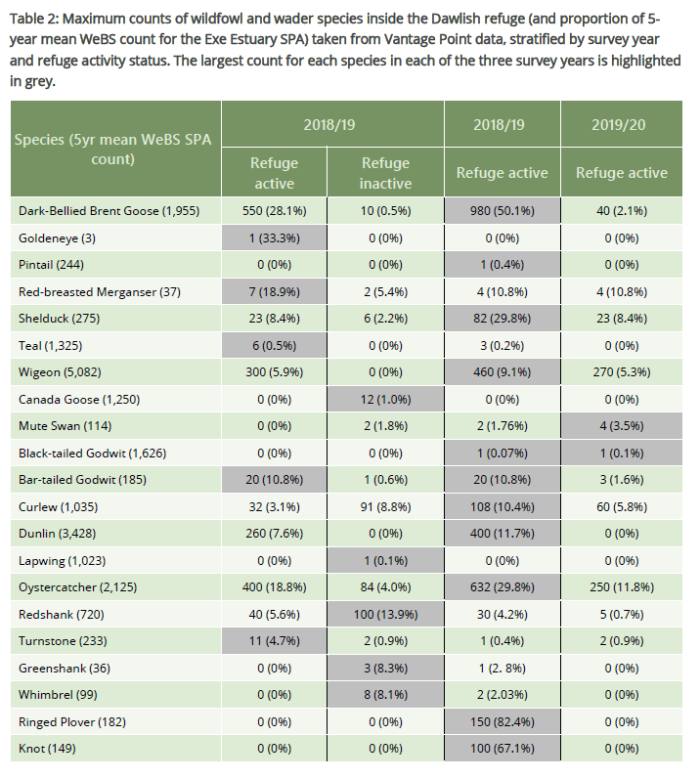
Annual increase in wildfowl at Exmouth refuge over three years.
- There was evidence that the maximum numbers of wildfowl recorded in and around the Exmouth refuge, when the refuge was active, showed an annual increase over the three years of the study. (Table 1, page 34)

Peak levels of human activity recorded during summer and autumn.
- Peak levels of recreation activity at the Exmouth Core Count locations were recorded during the summer, although many activities still occurred when the refuge was active during autumn and winter. Activity levels at the Cockwood Core Count location, and to a lesser extent Dawlish Warren, showed a marked seasonality, with activity peaking in the summer and autumn. (Figures 5-8, pages 43-46)
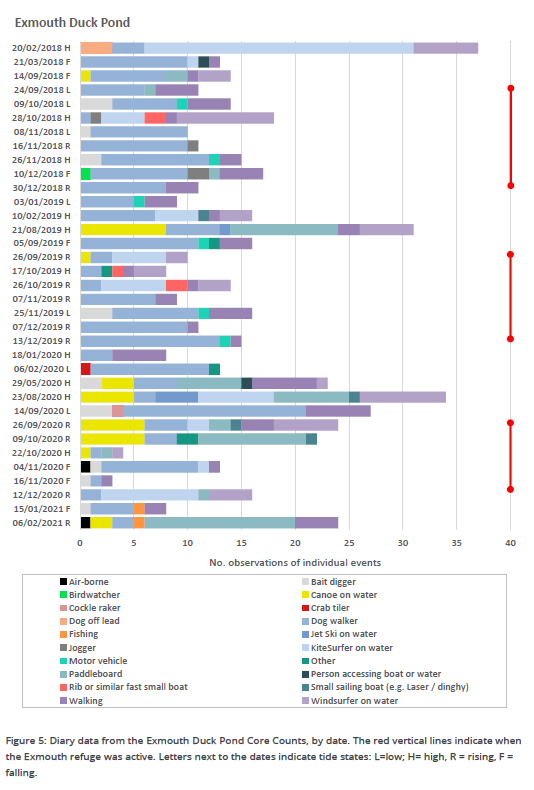
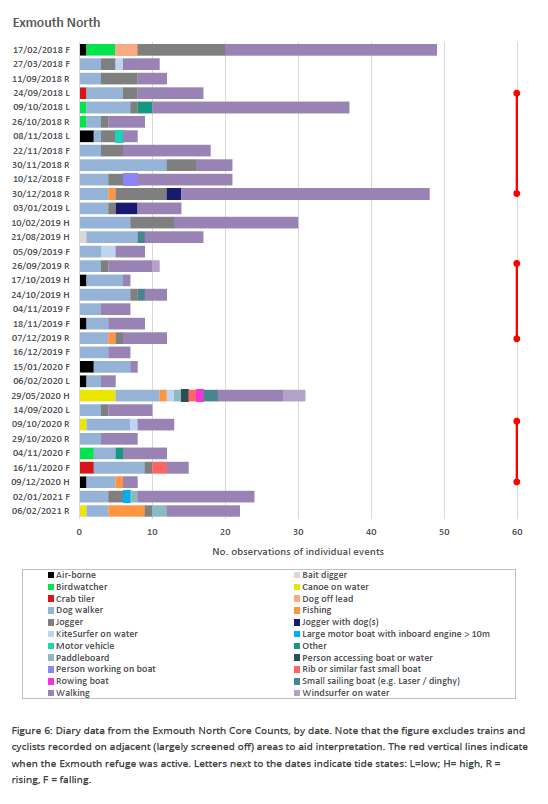
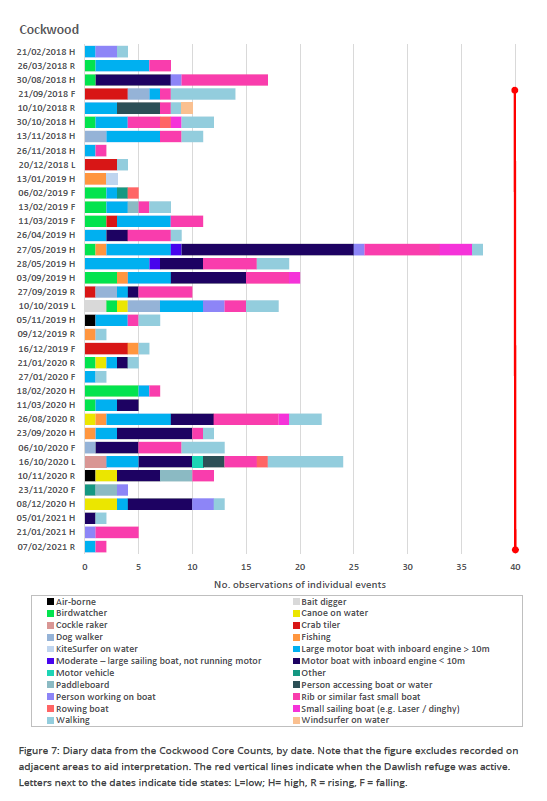
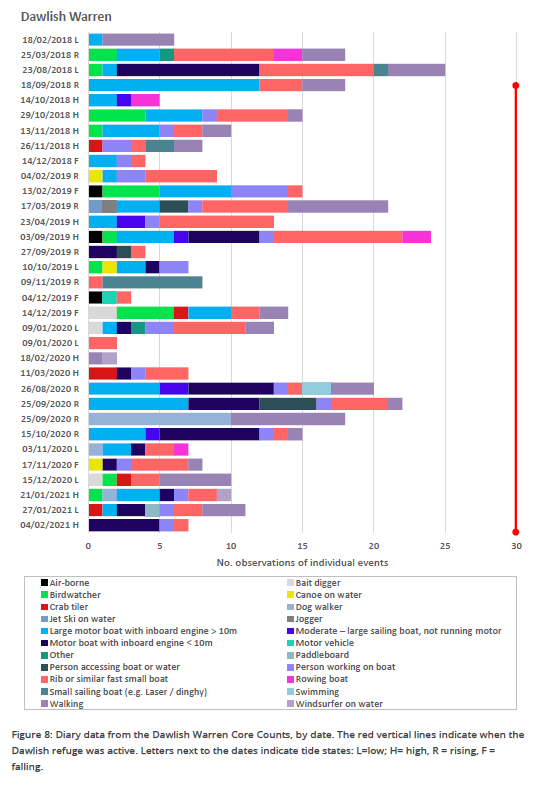
Year on year decrease in recreational activities in refuges.
- In the final year of the study hardly any incursions occurred within the Exmouth Refuge during its’ active period (15/9 - 31/12). There has also been a decrease in the small number of sporadic incursions occurring within the Dawlish refuge since its’ activation. The Vantage Point Count data showed a year on year decrease across the three years in the number of observations involving recreational activity inside the refuges when they were active (although no such pattern was evident from the Core Counts). (Figure 10, page 60)
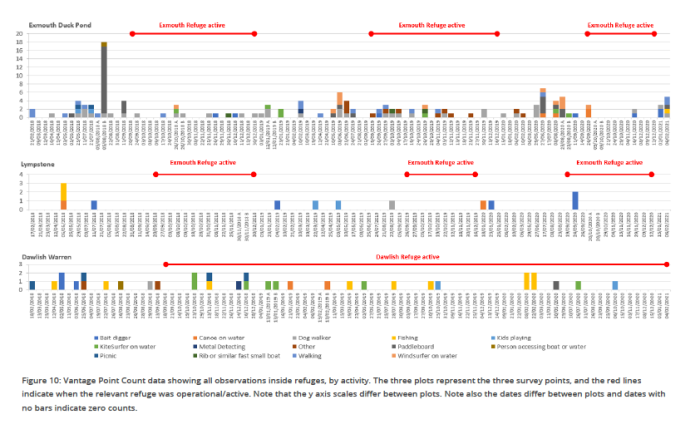
Fewer birds recorded after higher levels of human activity.
- The number of birds present at the end of each Core Count generally showed a negative relationship with the number of potential disturbance events recorded during the count (i.e. the preceding 105 minutes). In other words, when there had been higher levels of human activity there were fewer birds present in and around the refuges.
- A temporal effect was also noted at Exmouth North, with fewer activities and more birds recorded in the final year of the study and more events and fewer birds recorded in the first year. (Figure 13, page 73)
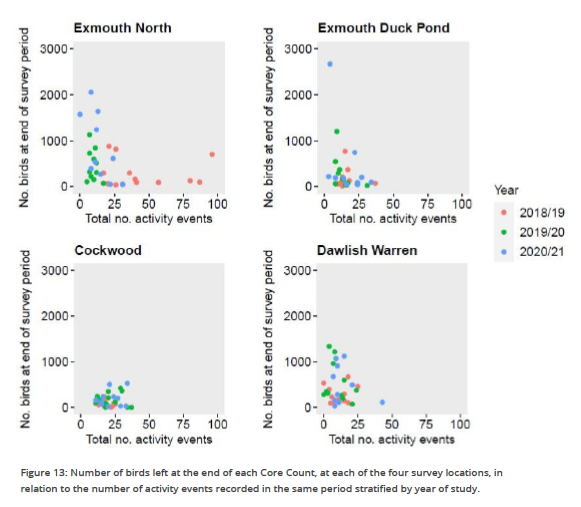
Refuges have a role to play in providing mitigation.
- The results broadly show that the refuges are well used by the birds, with (for some species) a high proportion of the SPA population using the refuges. Recreational use includes a wide range of activities, but in general relatively few incursions were recorded. The refuges therefore have a role to play in providing mitigation and are part of a package of measures that includes wardening, codes of conduct, awareness raising and the provision of alternative sites for recreation. It is this package of measures together that ensures the long-term resilience of the estuary and the effectiveness of mitigation.